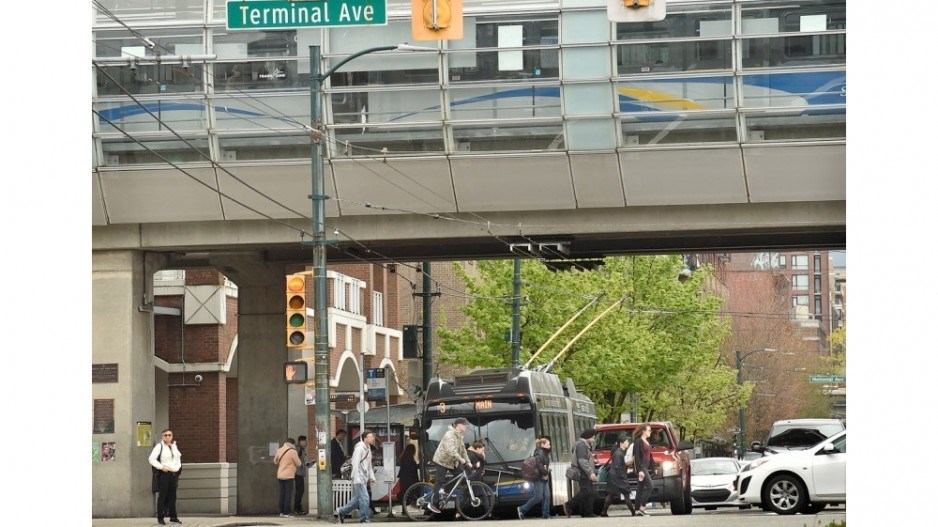Not exactly breaking news here, but it’s evident the city has spent some serious taxpayer dollars in recent years to make it easier for pedestrians and cyclists to get around in Vancouver.
In fact, the city has about 100 kilometres of bike routes for all ages and abilities, which is almost twice what existed in 2011.
In that time, cycling trips have more than doubled.
Progress is also being made on developing the city’s first-ever walking plan.
In the last year alone, the city has installed more than 200 curb ramps, 15 pedestrian crossings and upgraded and added sidewalks in many neighbourhoods, with sections of Brock, Penticton and Elliott streets, along with 41st Avenue, evidence of the improvements.
Even so, the city’s climate emergency action plan target of having two-thirds of all trips by citizens made by walking, bike or transit by 2030 is in jeopardy, according to a Jan. 21 memo to council from Lon LaClaire, the city’s general manager of engineering services.
A chart attached to his memo shows sustainable mode share — which means biking, walking and transit — increased roughly one per cent a year before the pandemic was declared in March 2020.
That progressive rate got Vancouver up to 54.1 per cent in 2019, which came as good news considering the 2030 goal is to have 66 per cent or more trips completed without a car.
Then along came the pandemic, which dramatically reduced that growth to 44 per cent in 2020.
As Paul Storer, the city’s director of transportation, said in a July 2020 presentation to city council about the pandemic’s effect on how people get around in Vancouver:
“This has thrown a big shock into our transportation system. We saw a big drop in trips and we also saw a bit of a shift away from sustainable modes. We saw transit ridership drop by about 80 per cent.”
![]() A chart from Lon LaClaire's memo to council. Image courtesy City of Vancouver
A chart from Lon LaClaire's memo to council. Image courtesy City of Vancouver
That setback means the sustainable mode share now has to grow 30 per cent faster than pre-pandemic rates, which presents a challenge that is both known and unknown: the need for more curb ramps, bike lanes, pedestrians signals and better connections to transit coupled with the uncertainty of how citizens’ travel habits have changed during the pandemic.
In other words, if you build it, will they come?
The city’s definition of a trip, by the way, could be a person walking to a library. That’s one trip. Then that same person rides a bike to the grocery store. Another trip. On the way home, that person stops at a record store to buy Elvis Costello’s new album. Trip number three.
LaClaire didn’t include any stats on transit ridership but said that information will come soon in a separate memo to council.
But it's no secret that ridership has dipped across the region.
A report that went before the Mayors’ Council on Regional Transportation in September 2021 said TransLink’s ridership fell from 1.4 million boardings a day in mid-March 2020 to about 240,000 boardings — or approximately 17 per cent of 2019 ridership — within the first month of the pandemic.
By the fall of 2020, ridership began to return with 620,000 boardings every weekday across the region. TransLink issued a news release in September 2021 saying it had seen its biggest increase in ridership in 18 months.
Yet many people, including friends, family and colleagues, still refuse to take transit for fear of contracting COVID-19. At the same time, others have spent less time in their cars and are working from home.
Not everyone has such options, which is another story for another time.
In the meantime, major city projects scheduled for this year include the start of construction on the Granville Bridge Connector and Drake Street walking and cycling routes, which will link the Arbutus Greenway to Drake Street and Richards Street, which recently upgraded the stretch between Cordova and Smithe streets for pedestrians and cyclists.
Why is any of this important? Why should you care?
Because 40 per cent of Vancouver’s carbon pollution comes from gas and diesel vehicles.
Which, no matter how you choose to get around, is not good for any of us.
@Howellings




